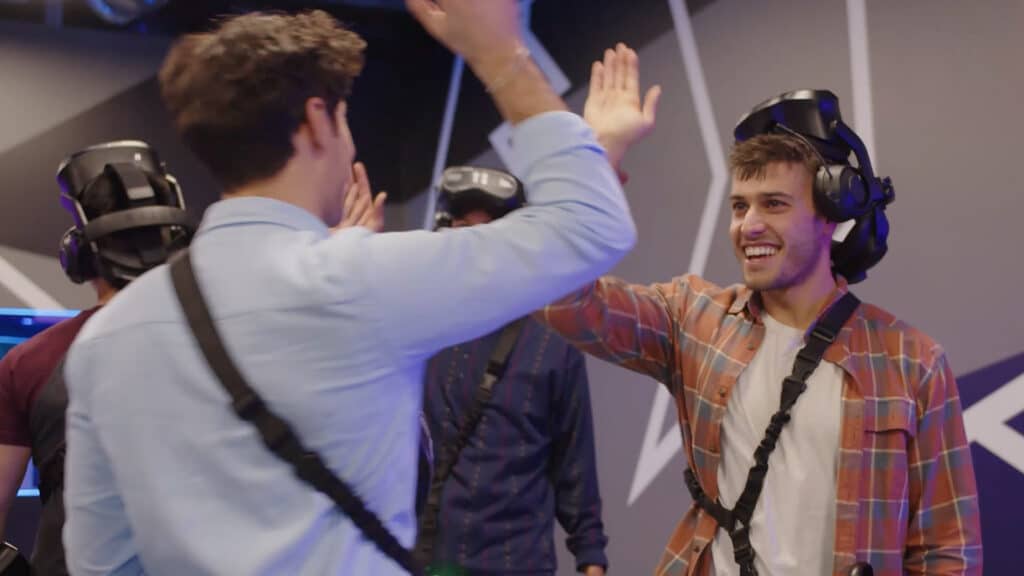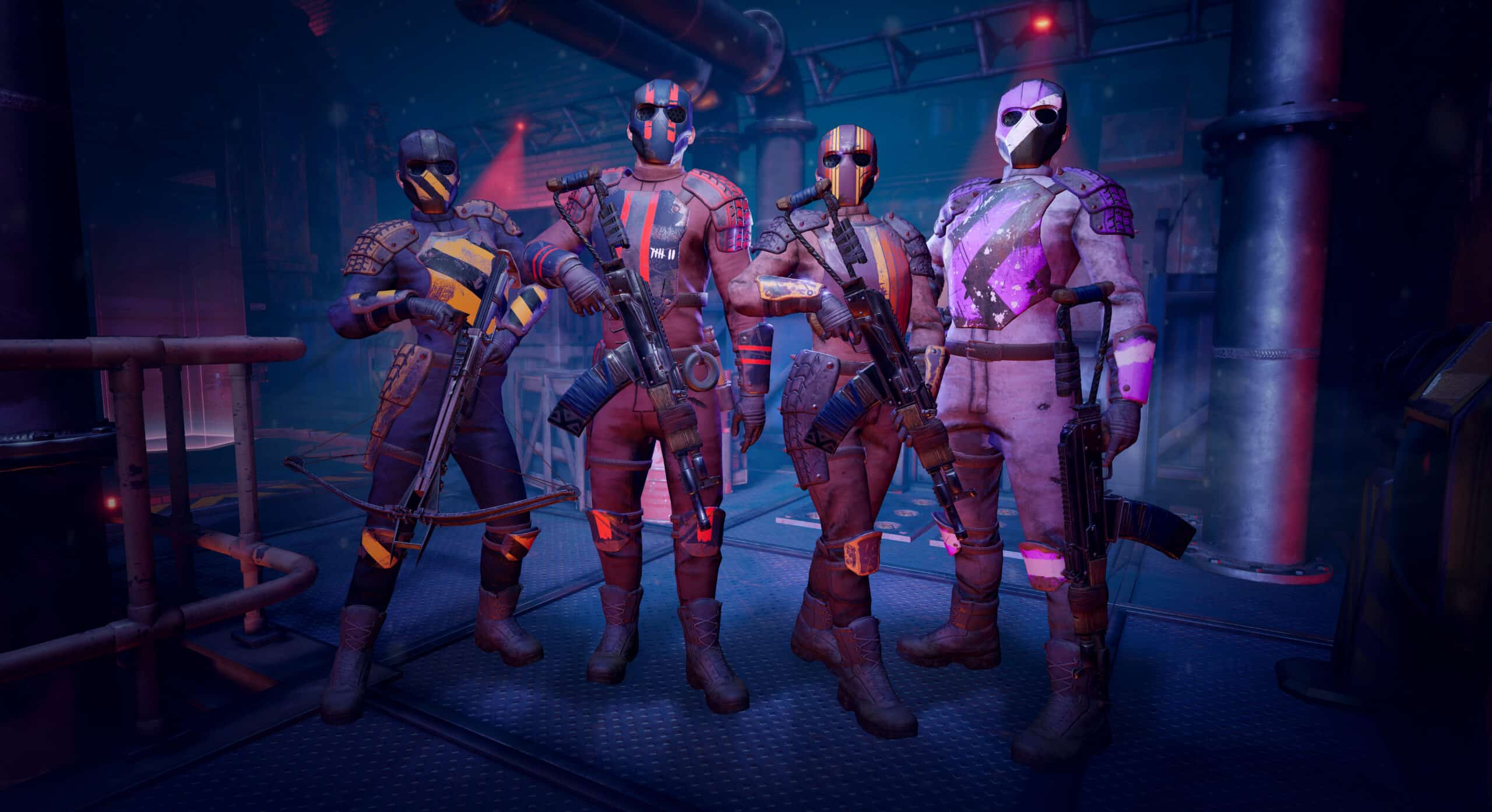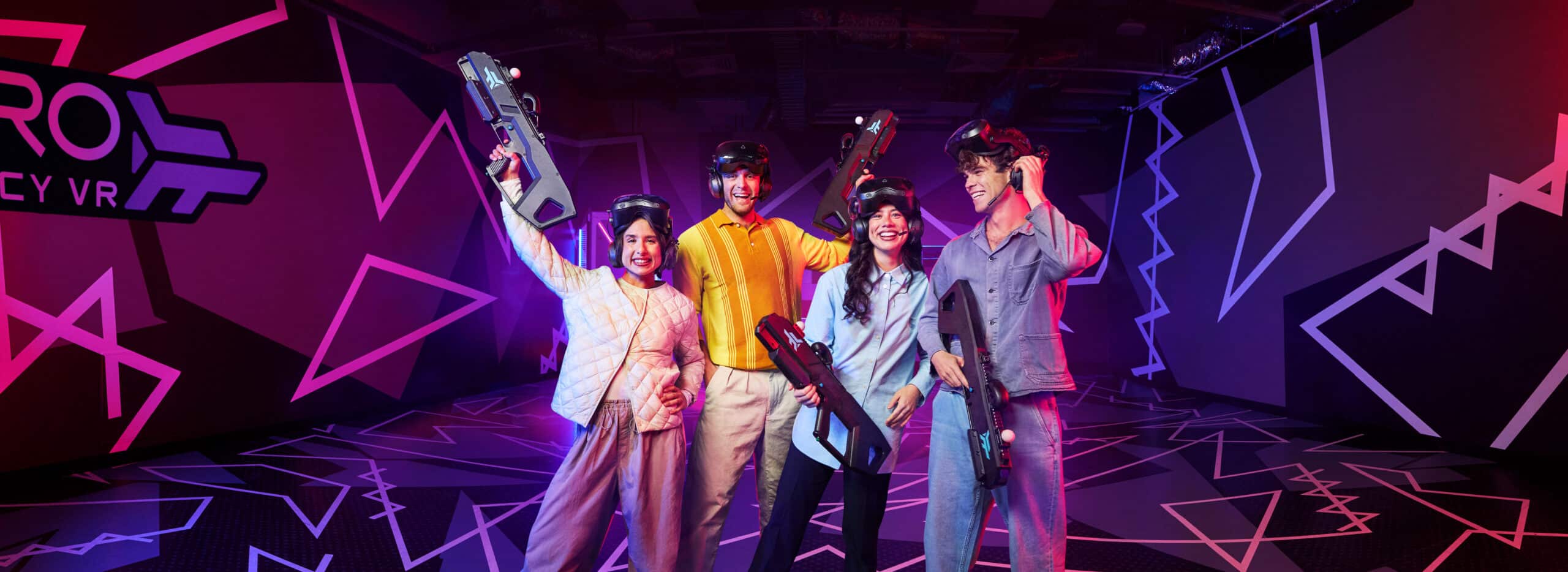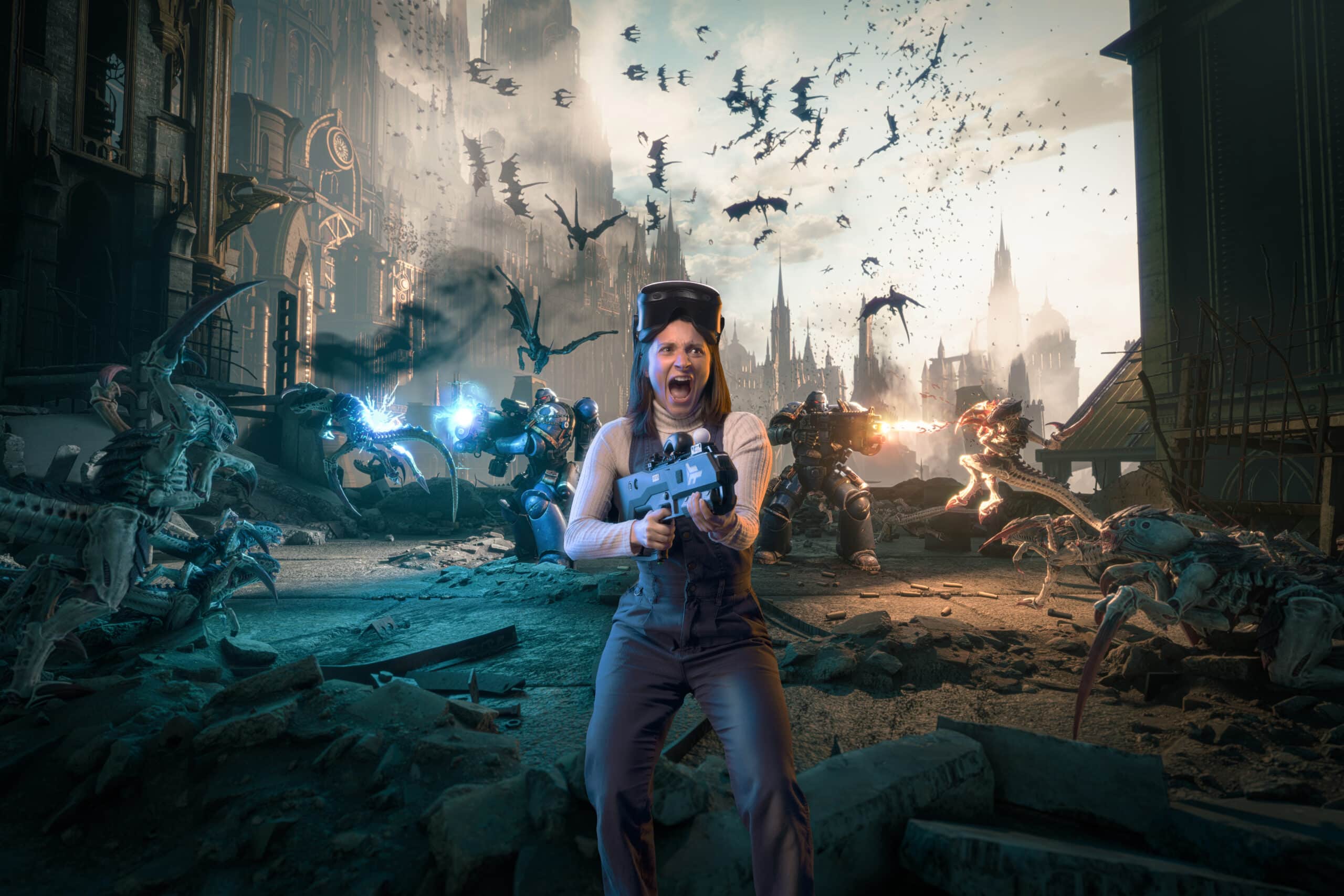Imagine stepping into a world where your team can explore distant galaxies, solve ancient mysteries, or even survive a zombie apocalypse—all without leaving the office. This isn’t a scene from a sci-fi movie; it’s the new reality of team building, thanks to the magic of Virtual Reality (VR). At Zero Latency Ottawa, we’re pioneering this thrilling frontier, and the results are nothing short of transformative.
The VR Advantage
Picture this: your team gathers in our state-of-the-art arena, slipping on their VR headsets. Suddenly, they’re not just colleagues—they’re space marines on a mission, each member playing a crucial role in the success of their virtual adventure. The usual office dynamics fade away as they communicate and collaborate in this immersive environment. It’s not just fun; it’s a powerful exercise in teamwork and problem-solving.
Take Sarah, for example, a project manager who was skeptical about VR’s impact on team building. After her first session at Zero Latency Ottawa, she was amazed at how her team, often siloed in their daily tasks, came together to strategize and support one another. “It was like seeing a new side of everyone,” she said. “We were laughing, shouting directions, and genuinely working as a unit.” This aligns with findings from Capgemini, where 82% of companies noted VR as a highly effective tool for enhancing team collaboration.
The Immersive Experience
The magic of VR lies in its ability to create an entirely immersive experience. Unlike traditional team-building activities, which often rely on role-playing or hypothetical scenarios, VR places participants in a fully-realized digital world. Here, they can interact with their environment and each other in real-time, making decisions and facing challenges that feel as real as any they might encounter in the office.
For instance, in one of our popular scenarios, teams must work together to navigate a derelict spaceship, solving puzzles and avoiding traps to reach their goal. This high-stakes environment encourages quick thinking and clear communication, as team members must rely on each other’s strengths to succeed. The adrenaline rush of the experience fosters a sense of camaraderie that extends beyond the virtual world and into the workplace. According to a report by PwC, VR training can be four times faster than classroom training, making it an efficient tool for team development.
Case Studies
Consider the story of Tech Innovators Inc., a company that decided to shake up their annual team-building retreat. Instead of the usual trust falls and workshops, they opted for a VR experience at Zero Latency Ottawa. The team found themselves in a virtual world where they had to solve complex puzzles to escape a digital labyrinth. The stakes were high, but the camaraderie and collaboration were even higher. By the end of the day, barriers were broken, and new friendships were forged.
Then there’s the tale of Creative Minds Marketing, who faced the challenge of uniting a team spread across different continents. Through VR, they brought their team together in one virtual space, where they worked side-by-side to conquer challenges and celebrate victories. The experience not only bridged geographical gaps but also strengthened their global team spirit. The University of Maryland found that VR experiences can improve retention rates by up to 40% compared to traditional methods, highlighting the effectiveness of such immersive activities.
Why VR is the Future of Team Building
The potential of VR in team building extends far beyond just fun and games. It’s about creating meaningful connections and developing skills that translate directly to the workplace. In a VR environment, teams can practice critical skills like problem-solving, leadership, and adaptability in a safe and controlled setting. These experiences can reveal hidden talents and foster a culture of trust and respect among team members.
Moreover, VR offers a level of inclusivity that traditional team-building activities often lack. Participants of all abilities can engage fully in a VR experience, as the technology can be adapted to meet diverse needs. This inclusivity ensures that everyone can participate and contribute, strengthening the team as a whole.
As we look to the future, it’s clear that the way we build and maintain teams is evolving. Virtual Reality isn’t just a tool—it’s a gateway to new possibilities for connection and collaboration. At Zero Latency Ottawa, we’re thrilled to be part of this journey, offering experiences that are as exhilarating as they are enriching. So, gather your team, step into a new dimension, and discover how VR can transform your team’s dynamics in ways you never imagined.





